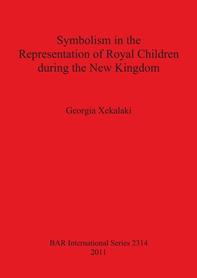| Main » Ad Board » ДРЕВЕН ЕГИПЕТ И АФРИКА » Бит и ежедневие |
| 24.03.2019, 18:14 | |
Монографията представя символизма при литературното или визуално представяне на децата в семейството на фараона през епохата на Новото царство (ок. 1550-1069 г. пр. н.е.). Разгледани са основните митологеми в които се вмества образът: чудотворно раждане, безсилно и застрашено дете, могъщество и божествени сили при съзряване. - на английски език, от Google Drive, формат PDF. Сваляне с ляв бутон (downloading by left button) от страницата на предоставящия сървър, после през бутона стрелка надолу/after by down arrow button. КАТО ДИСЕРТАЦИЯ / AS A PH. D. DISSERTATION: - на английски език, от Google Docs,формат PDF. Сваляне с ляв бутон (downloading by left button) от страницата на предоставящия сървър, после през бутона стрелка надолу/after by down arrow button.
| |
| Views: 1479 | Placed till: 31.12.2023 | Rating: 0.0/0 | |


